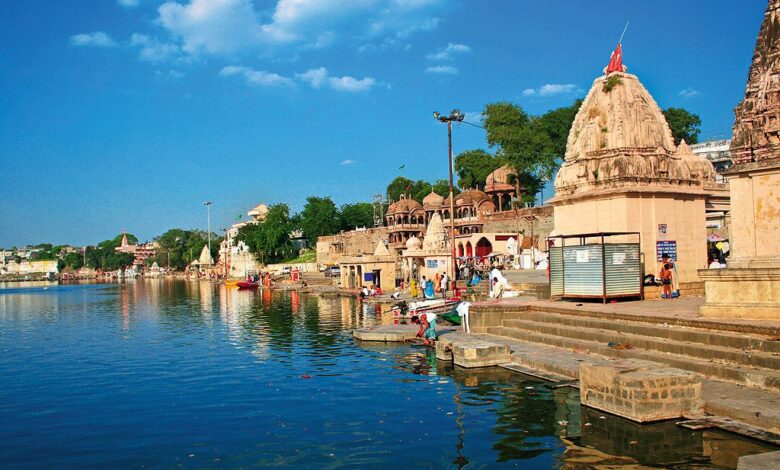Maha Mrityunjaya Jaap in Ujjain: Puja Guide for Good Health


Ujjain, a city steeped in history and spirituality, holds a special place in the hearts of devotees across India. One of the most revered rituals performed in this ancient city is the Maha Mrityunjaya Jaap. This sacred chant, dedicated to Lord Shiva, is believed to invoke divine blessings and provide relief from suffering. In this article, we delve into the significance, process, and benefits of the Maha Mrityunjaya Jaap in Ujjain.
Significance of the Maha Mrityunjaya Jaap
The Maha Mrityunjaya Jaap, also known as the Death-Conquering Mantra, is a powerful Vedic hymn dedicated to Lord Shiva. The mantra is as follows:
Om Tryambakam Yajamahe Sugandhim Pushtivardhanam |
Urvarukamiva Bandhanan Mrityor Mukshiya Maamritat ||
This mantra is believed to have the power to ward off negative energies, heal physical and emotional ailments, and bestow longevity and prosperity. Ujjain, being one of the most sacred cities in India, offers a profound spiritual ambiance for performing this jaap.
Historical and Mythological Importance of Ujjain
Ujjain, also known as Avantika, is one of the seven holy cities (Sapta Puri) in Hinduism. It is home to the Mahakaleshwar Jyotirlinga, one of the twelve Jyotirlingas dedicated to Lord Shiva. The city’s spiritual significance is further enhanced by its association with various mythological events and saints.
The Legend of Mahakaleshwar
According to legend, the Mahakaleshwar Temple was established when a demon named Dushana was slain by Lord Shiva to protect his devotees. The presence of the Mahakaleshwar Jyotirlinga in Ujjain makes it an ideal place for performing the Maha Mrityunjaya Jaap.
The Ritual Process of Maha Mrityunjaya Jaap
Performing the Maha Mrityunjaya Jaap in Ujjain is a meticulously structured ritual. Here is a step-by-step guide to the process:
1. Selection of the Auspicious Day
Choosing an auspicious day is crucial for the success of the jaap. Mondays, dedicated to Lord Shiva, are considered highly favorable. Additionally, specific nakshatras (constellations) and tithis (lunar days) enhance the efficacy of the chant.
2. Preparation and Purification
Before beginning the jaap, it is essential to purify oneself and the surroundings. This involves taking a holy bath, wearing clean clothes, and setting up a sacred space with a Shiva Lingam or an image of Lord Shiva.
3. Sankalp (Vow)
The ritual begins with the Sankalp, where the devotee takes a vow to complete the chant with a specific intention, be it for health, prosperity, or spiritual growth.
4. Invocation of Lord Shiva
The next step involves invoking Lord Shiva by reciting introductory prayers and offering items such as flowers, fruits, water, and incense.
5. Chanting the Mantra
The core of the ritual is the continuous chanting of the Maha Mrityunjaya Mantra. It is traditionally recited 108 times, but it can be extended to 1,25,000 times for profound benefits. The chant is usually performed with the help of a rudraksha mala (prayer beads).
6. Homa (Fire Ritual)
A homa or havan is conducted where oblations are offered into the sacred fire while chanting the mantra. This act symbolizes the offering of oneself to the divine and seeking purification.
7. Purnahuti (Final Offering)
The ritual concludes with Purnahuti, where a final offering is made to the fire, and the blessings of Lord Shiva are sought.
Benefits of Performing Maha Mrityunjaya Jaap
The Maha Mrityunjaya Jaap is renowned for its numerous benefits, which include:
1. Healing and Health Benefits
Chanting this mantra is believed to have profound healing effects. It can alleviate physical ailments, reduce stress, and promote overall well-being. The vibrations generated by the mantra are said to harmonize the mind, body, and soul.
2. Protection from Negative Energies
The mantra acts as a protective shield against negative energies, evil spirits, and untimely death. It is often recited to safeguard oneself and loved ones from dangers.
3. Spiritual Growth
For those on a spiritual path, the Maha Mrityunjaya Jaap aids in deepening meditation, enhancing concentration, and achieving spiritual enlightenment. It fosters a strong connection with Lord Shiva, leading to inner peace and divine grace.
4. Longevity and Prosperity
Regular recitation of this mantra is believed to bestow longevity and prosperity. It removes obstacles and paves the way for a fulfilling and successful life.
Performing the Jaap in Ujjain: Practical Tips
1. Choosing the Right Temple
While the Mahakaleshwar Temple is the most prominent, there are several other Shiva temples in Ujjain where the jaap can be performed. It is advisable to consult local priests for guidance.
2. Seeking Assistance from Priests
Engaging experienced priests to conduct the jaap ensures that the ritual is performed accurately and effectively. They provide valuable insights into the correct pronunciation and procedures.
3. Participating in Group Jaaps
Participating in group jaaps, often organized by temples and spiritual organizations, can amplify the benefits. The collective energy enhances the potency of the chant.
Conclusion
The Maha Mrityunjaya Jaap in Ujjain is a profound spiritual practice that offers immense benefits to devotees. Its rich history, deep spiritual significance, and meticulous ritual process make it a powerful tool for healing, protection, and spiritual growth. By performing this sacred chant in the holy city of Ujjain, devotees can experience the divine blessings of Lord Shiva and embark on a journey towards a healthier, happier, and more prosperous life.




